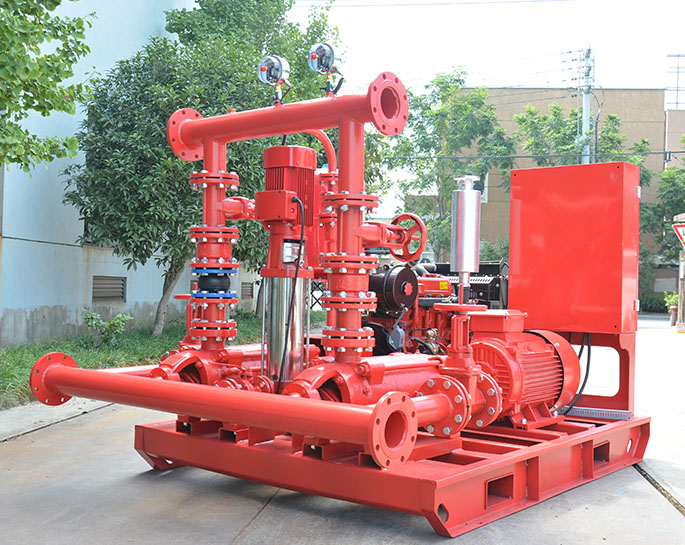Commissioning of fire pump water supply system
Commissioning of a fire pump water supply system is a crucial process to ensure that the system is properly installed, functional, and ready to operate effectively in the event of a fire emergency. This process involves thorough testing, inspection, and documentation to verify that all components and subsystems are working as intended. Here are the general steps involved in commissioning a fire pump water supply system:
-
Pre-Commissioning Preparation:
- Review the system design and specifications to ensure all requirements are understood.
- Verify that all necessary permits and approvals are in place.
- Ensure that all equipment and components are installed according to the manufacturer's guidelines and applicable codes and standards.
-
Functional Testing:
- Test all electrical and mechanical components of the fire pump, including motors, controllers, switches, and alarms.
- Conduct a flow test to ensure the pump is delivering the required water flow rate.
- Test the jockey pump (if applicable) for maintaining system pressure during non-emergency situations.
- Test the main fire pump using various scenarios, including full load operation.
-
Pressure and Leakage Testing:
- Perform pressure tests on the entire system to ensure that pipes, valves, and fittings can withstand the required operating pressures.
- Check for any leaks in the system and address them as necessary.
-
Electrical Testing:
- Inspect and test the electrical connections, wiring, and controls of the fire pump and associated components.
- Verify that all electrical components are properly grounded and protected.
-
Alarms and Monitoring Systems:
- Test all fire pump alarms, including high and low-pressure alarms, overcurrent alarms, and any other relevant alarms.
- Ensure that monitoring and control systems are functional and capable of notifying personnel of any issues.
-
Backup Power Source Testing:
- If the fire pump has a backup power source, such as a generator or uninterruptible power supply (UPS), test its functionality and switch-over mechanisms.
-
Documentation:
- Keep detailed records of all tests performed, including results, dates, and any corrective actions taken.
- Compile manufacturer's documentation, test reports, and other relevant information for future reference.
-
Verification:
- Engage relevant authorities, such as fire departments or regulatory bodies, to verify that the system meets all legal and regulatory requirements.
- Obtain necessary certifications and approvals.
-
Training:
- Provide training to facility personnel on the operation, maintenance, and emergency procedures related to the fire pump water supply system.
-
Final Approval and Handover:
- Once all tests are successfully completed, and any identified issues are resolved, the fire pump water supply system can be formally commissioned.
- Obtain final approval from relevant parties before putting the system into service.
It's important to note that the commissioning process may vary based on local regulations, the complexity of the system, and the specific requirements of the facility. Therefore, it's recommended to work closely with experienced professionals who are knowledgeable about fire protection systems and commissioning processes.







